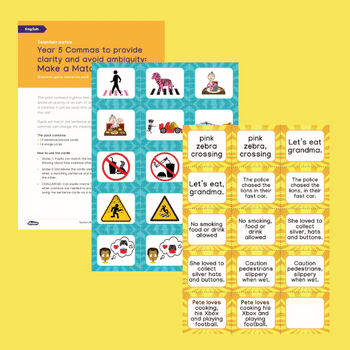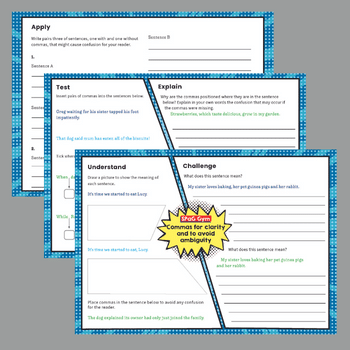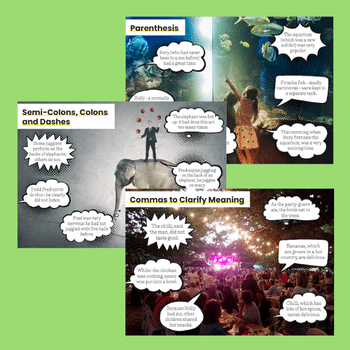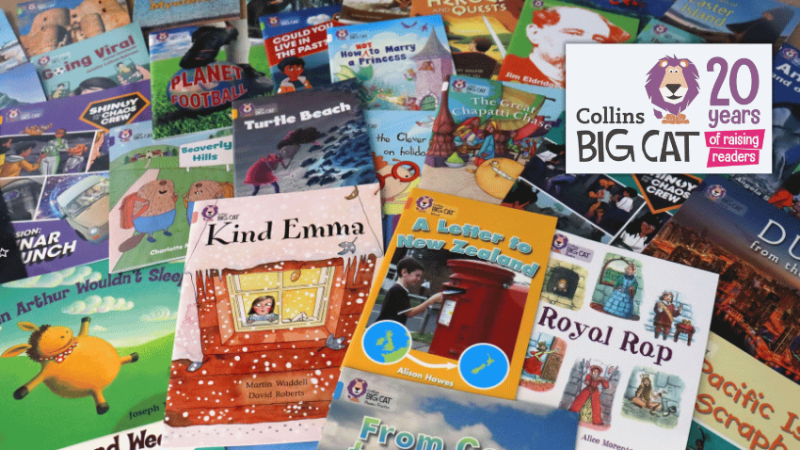Commas to avoid ambiguity – 6 of the best KS2 worksheets, games and lesson plans

Punctuation is a serious business; but these resources come with a side-order of humour to help pupils write with clarity

- by Teachwire

Jump to a section
- Commas for clarity – complete resource pack
- Video lesson with cartoons
- Grammar game – make a match
- Commas to avoid ambiguity worksheets
- Funny comma memes
- Punctuation poster pack
Ah, the humble comma. Such a discreet little flick of a punctuation mark; yet one that’s capable of doing some impressively heavy lifting in a whole range of sentence types.
In Year 2, for example, pupils meet it for the first time, separating items in a list. During Year 3, it can be spotted marking out subordinate clauses; and of course, from Year 4, it starts doing its duty at the end of fronted adverbials.
By Year 5, then, children might feel that the last thing they need is yet another lesson about commas; but a quick check of the National Curriculum confirms that there’s a further objective to cover: how to use commas to avoid ambiguity in writing and make the meaning of sentences clear.
Luckily, there’s no need for you or your class to panic; because we’ve scoured the internet and picked out some of our favourite teaching resources, worksheets, display materials, lesson planning packs and more, to help ensure that everyone’s sentence punctuation is as close to perfection as possible.
First, though, let’s make sure we all know exactly what we’re talking about…
What is a comma?
Commas are usually placed between items in a list or between some phrases and clauses within sentences.
How do they provide clarity?
Commas can be used to avoid confusion when writing, for example, by making the subject and object of a verb clear; identifying who is being named, or who is delivering reported speech; or avoiding potential misunderstanding.
How can we define ‘clarify’?
To clarify means to explain something so that it’s easier for people to understand (other words in the same family include clarifying, clarified and clarification).
How can we define ‘ambiguity’?
Ambiguity means there may be more than one way to interpret something. It might be unclear.
Trending
Examples of commas to avoid ambiguity
- Let’s eat grandma! (Grandma may be eaten for dinner!)
- Let’s eat, grandma! (We are inviting our grandma to eat with us)
- The puppy said the young girl was always up to mischief. (Is the puppy talking?)
- The puppy, said the young girl, was always up to mischief. (The girl is definitely talking!)
- After, dark owls flew above the fields. (The dark owls flew after something had happened)
- After dark, owls flew above the fields. (the owls flew after it had become dark)
Are we all on the same page? In which case, let’s bring on those teaching resources – and put an end to ambiguity!
1. Commas for clarity KS2 – complete resource pack
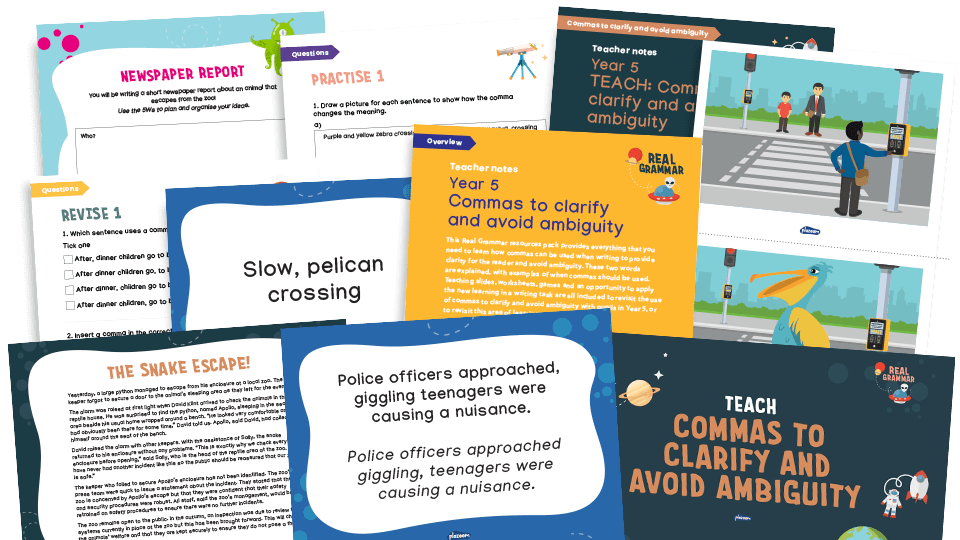
If you are looking for a single option offering EVERYTHING you need to teach commas for clarity (or any other objective from the grammar curriculum for KS1/KS2, for that matter), then this Real Grammar resource pack, from Plazoom, could be exactly what you need. Its comprehensive and flexible 5-step TEACH, PRACTISE, REVISIT, APPLY, REVISE approach ensures even the most complex grammatical concept can be taught with ease and, crucially, remembered by pupils. Original model texts demonstrate the objective in context, and creative writing tasks allow children to put their learning into practice.
2. Commas for clarity video lesson
This lovely lesson from Great Bridge Primary School makes good use of cartoon images to illustrate how the meaning of a simple sentence can change with the addition of a comma or two.
3. Grammar game – make a match
In this fun activity, pupils are asked to match multi-clause sentences with images that accurately reflect their meanings (warning: hilarity may ensue…)
4. Punctuation worksheet
This bright, comic book style KS2 worksheet is divided into five sections: understand, challenge, test, explain and apply – making it ideal for practice and revision at any point during the year, or for home learning.
5. Commas are important people!
Hilarious examples of comma misuse can be found in abundance online; but tracking down the good ones can take forever, and alas, not all of them will be suitable for the classroom. So, to save time – and avoid irate emails from parents regarding your ‘inappropriate wall display’ – here are a few we made earlier; you’re welcome.
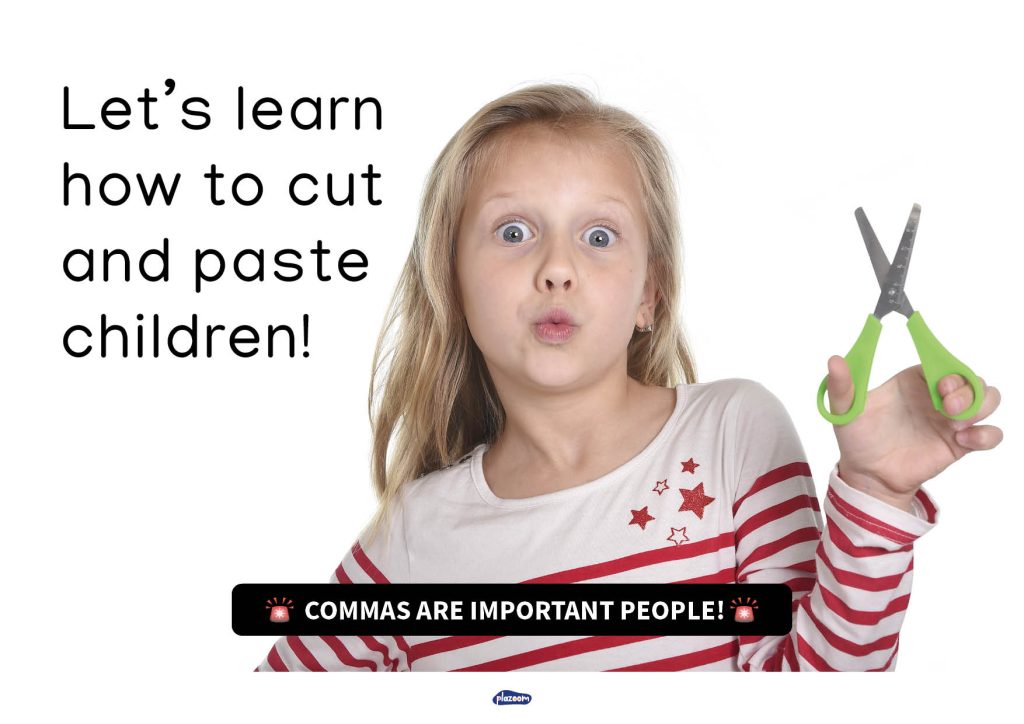
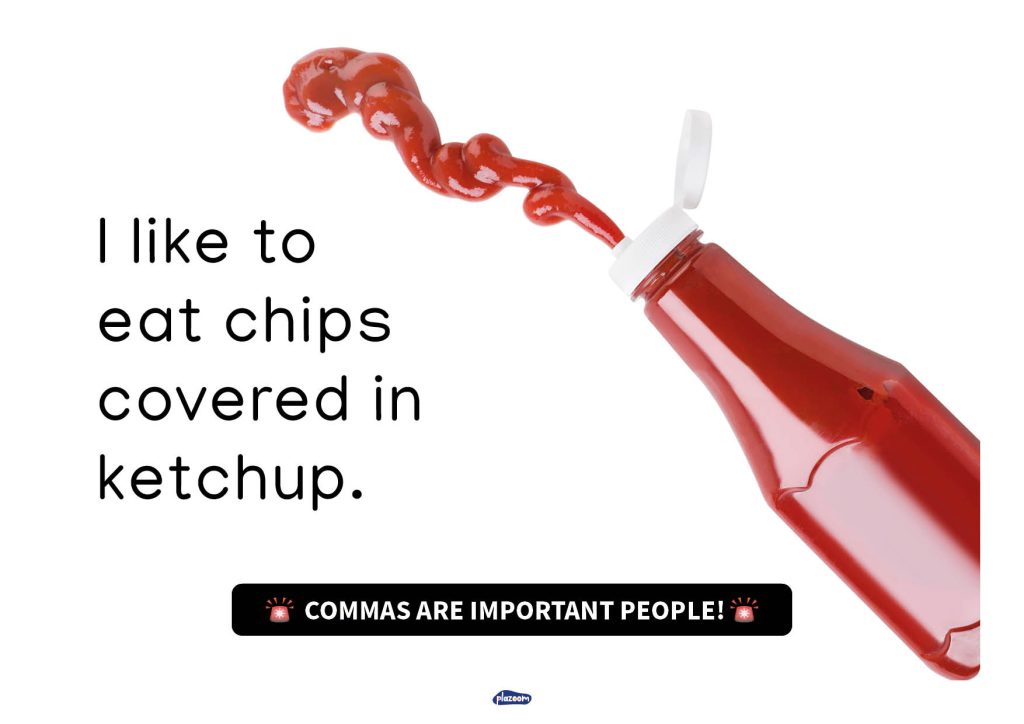
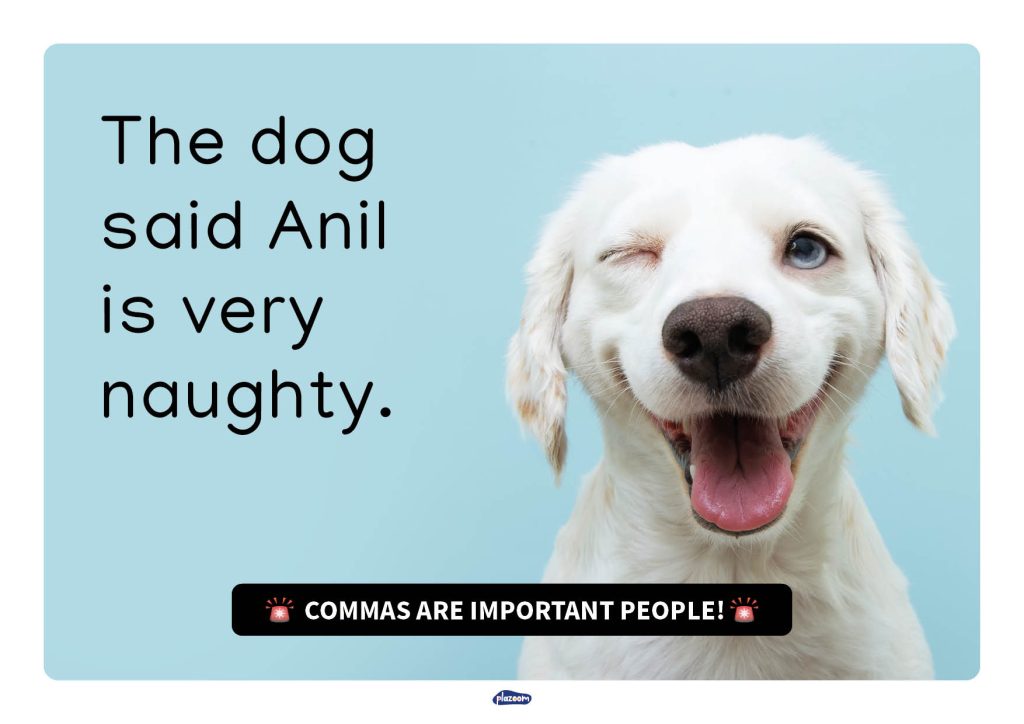
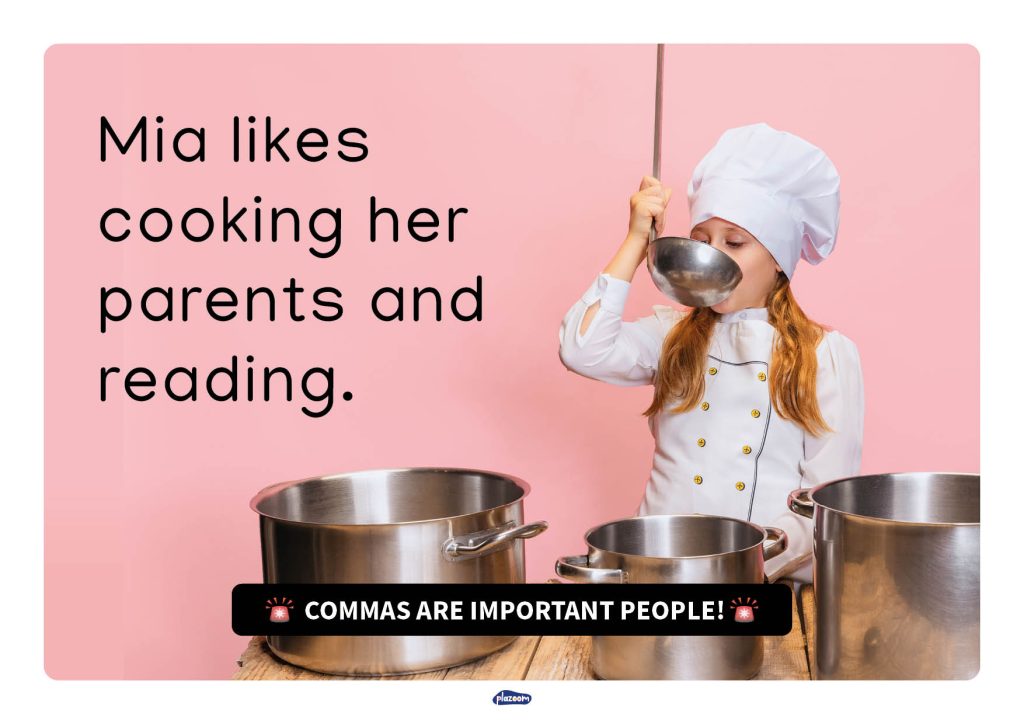
6. Grammatical concepts poster pack
With this great poster pack, you actually get six key grammatical concepts covered: colons to introduce a list; parenthesis; hyphens; semicolons, colons and dashes; bullet points… and commas to avoid ambiguity. Each poster uses a striking, memorable image with correct sentences modelling the grammar objective in speech bubbles around it. Blank versions of the posters are also included, with empty speech bubbles, so children can come up with their own examples.




